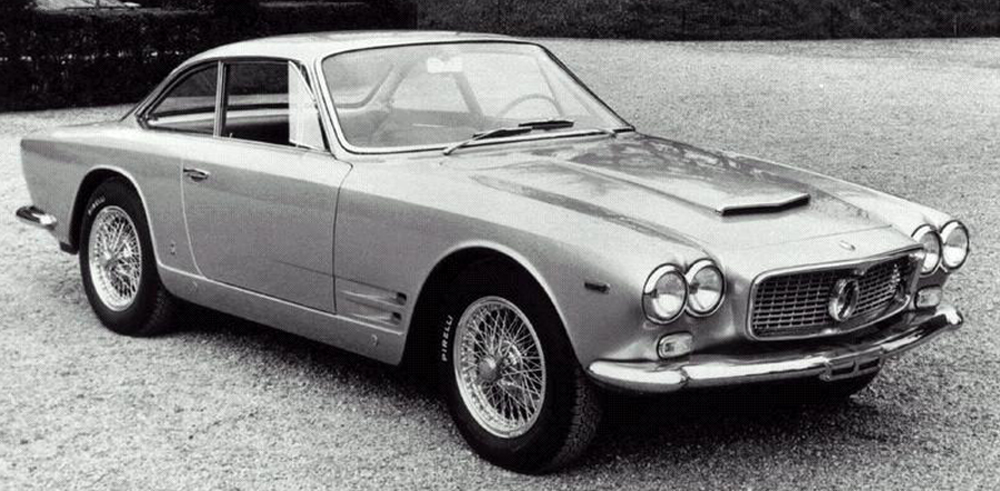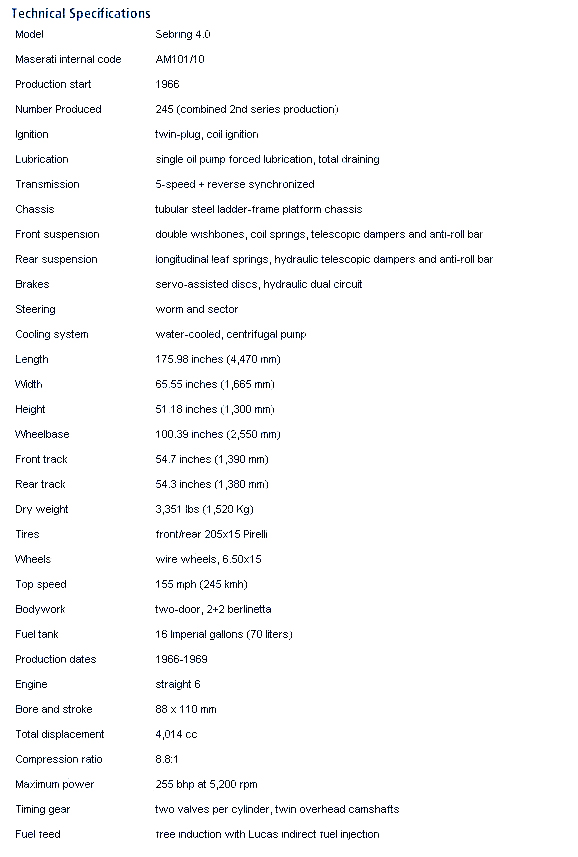
Maserati Sebring 3.5 (1962 to 1968)
In 1961, Vignale presented a stunning coupé variation based on the Maserati 3500 GT. It was named ‘Sebring’ after the Florida airfield track where, in 1957, Maserati took 1st and 2nd place in the famous 12 Hour race. The 2+2 coupé entered production the following year alongside the regular 3500 GT with a number of small aesthetic modifications. The chassis was similar to that of the 3500 GT spyder, at 2.5 meters long.
The production of this 2 +2 coupe was launched the following year and took place simultaneously with that of the standard 3500 GT, from which differed for different aesthetic details. The frame is 2.5 meters long, was similar to that of the 3500 GT spyder.
Lucas direct fuel injection was fitted as standard, denoted by the model’s 3500 GTI S title, before the Sebring moniker of the initial prototype became widely adopted. Sportier than the 3500 GT, the Sebring was intended as an occasional 2-plus-2-seater with a simple bench seat in the rear. The engine had 235 hp on tap, generating speeds in excess of 145 mph. Disc brakes came as standard and an automatic gearbox was an option.
 Maserati Sebring 3.7 (1965 to 1968)
Maserati Sebring 3.7 (1965 to 1968)
In 1965 the Maserati Sebring was revised (brochures now referred to it as the “Sebring 2+2”), and two new engines were offered. The 3.7 liter power unit, first introduced with the Mistral, was now available in the Sebring, alongside a 4 liter version (see Sebring 4.0). Power was up from 220 to 245 hp. Stylistically, the modifications included a restyled front end with a chrome plate housing the double headlights, a new hood intake and the side vents were now located higher up on the front wings. Wire wheels were still available upon request. A combined total of 245 second series Sebrings were assembled.
Maserati Sebring 4.0 (1966 to 1969)
In 1965 the Maserati Sebring was revised, and a 4 liter engine was added the following year in the range-topping model. With 265 hp the level of performance was impressive, as attested by the 255 kph top speed (158 mph).
Stylistically, the modifications included a restyled front end with a chrome plate housing the double headlights, a new hood intake and side vents now located higher up on the front wings. The new tail lights were reminiscent of those on the Quattroporte, creating a strong rear-end resemblance. Internally the car was also revised and air conditioning was now available. A combined total of 245 second series Sebring were assembled and in 1969 the last four examples rolled of the assembly line, production having understandably decreased following the launch of the Ghibli two years earlier.
Specifications and Features




You must be logged in to post a comment.